Artist based in Detroit, Michigan
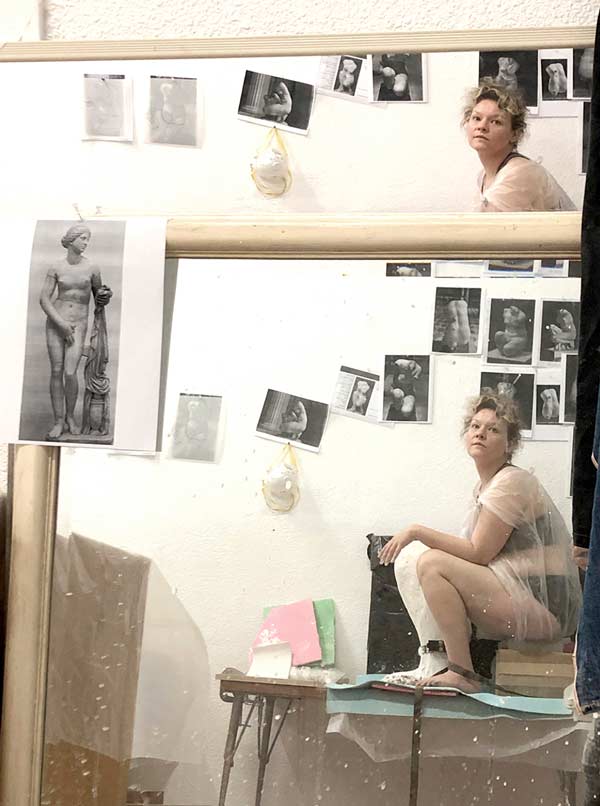
Kylie Lockwood, Portrait of the Artist
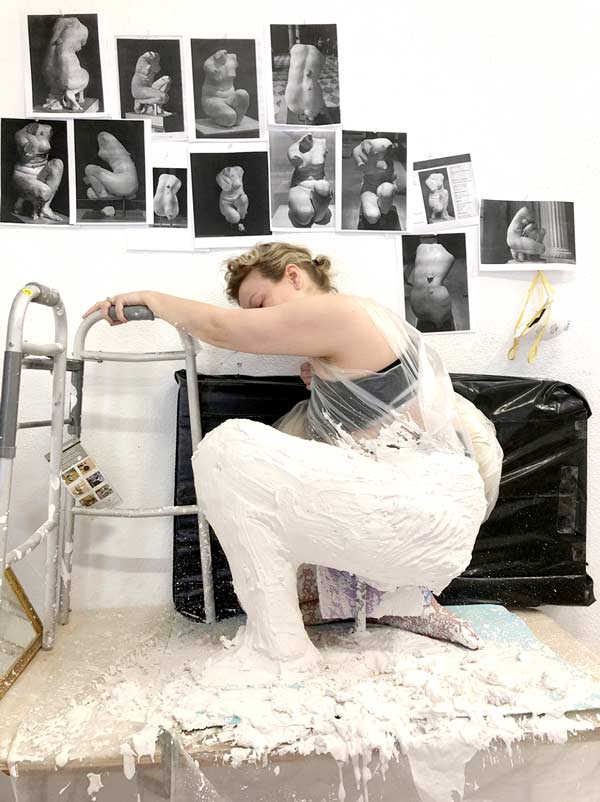
Tell us about yourself, what's your background?
I live and work in Detroit, Michigan, sharing space with my spouse, our three-year-old and a 65 lb. hound dog. I have a formal background in art and a second life as a color and materials designer, but the core of my practice has roots in childhood. My maternal grandmother was a porcelain doll maker and taught me how to work with porcelain at a young age.
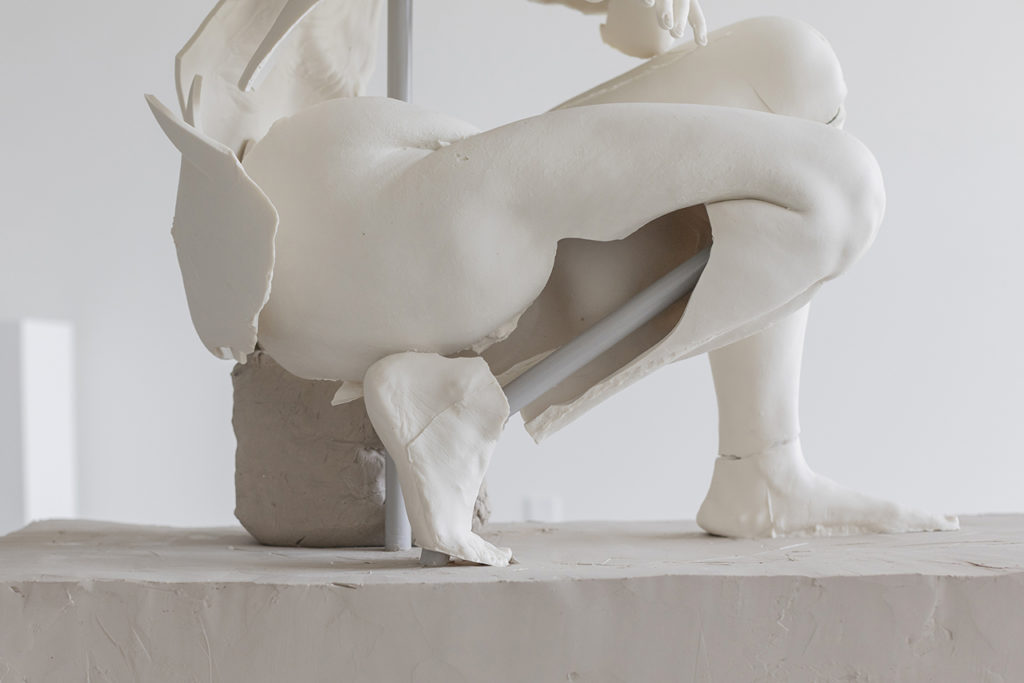
"For me the making of an artwork is a performance; a way of testing the limitations of my body."
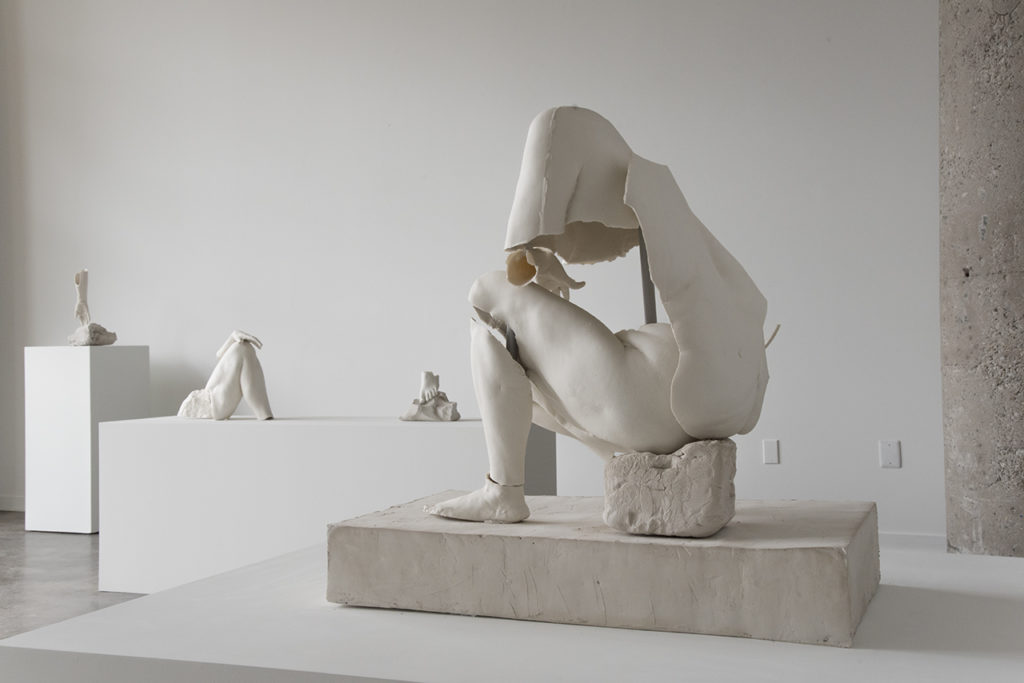
What are you currently working on and where did the inspiration for it come from?
I reconcile the experience of living in a female body with the history of sculpture. Engaging art historical themes rooted in classical Greek and Roman works of antiquity; I’m re-examining poses through the exploration of my body as sculpture. For example, my work Attempting Accroupie is a re-performance of the Crouching Venus, a Hellenistic model of Aphrodite at her bath. Originally created over 1800 years ago, I seek to occupy the space of this form, to interrupt the image and interrogate it from the inside. I sit low with my legs drawn up tightly beneath me. Stooping close to the ground, my arms reach across my body as my neck cranes to look over my right shoulder. My fallible body is attempting to fit an “idealized” form.
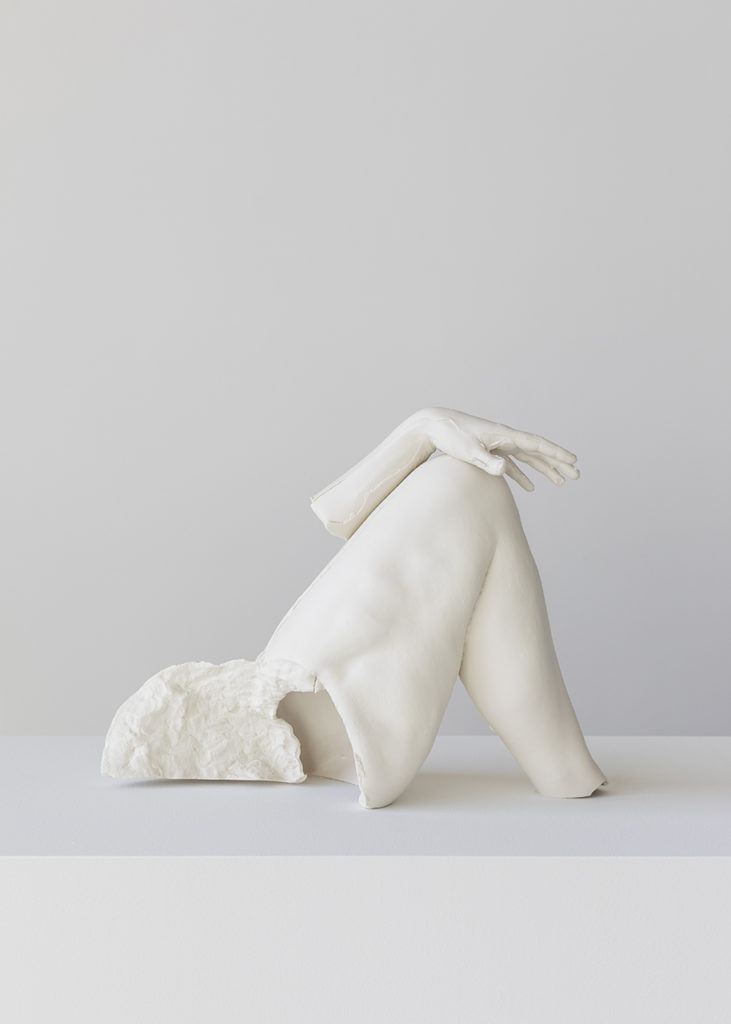
Innovation does not only happen in the field of technology — it occurs everyday in an artist's practice. What do you do for inspiration?
I find my peers work inspiring. They are also the people whose opinions I trust and seek the when questioning my own work. Another thing I find particularly inspiring is teaching. I teach in the Fine Art department at the College for Creative Studies in Detroit. It is really incredible to guide, assist and witness students finding their way through their work.

Where do ideas start for you? In the studio or being in the world?
Much of the work begins in questions and unknowns. My ideas normally germinate through research. However, I am really a kinesthetic thinker. So, at some point I need to shift into a more physical interaction with the material I’m working with. I need a relationship. I need a tension. This became undoubtedly clear for me a couple years ago, when I was working on a collaboration with a cognitive neuroscientist at the University of Oregon. In the beginning I was trying to develop and pre plan as much of the project as I could remotely however, I kept getting stuck. It wasn’t till I spent time as an artist in residence at the University that the work really began developing. The most significant parts of the projects came out of my firsthand experiences in the labs such as; laying in a FMRI participating in a study on memory, observing the amazingly sculptural set up in a biology lab focused on neural circuits and visual processing, discussing the gaps in language between art and science over lunch and using an eye tracker to turn my pupils into drawing instruments.

How do you make your work? Where do you start and how does the process evolve?
For me the making of an artwork is a performance; a way of testing the limitations of my body. My relationship to material is intimate and untethered to perfecting its capability. Through the process of directly pulling plaster molds off my skin, I am making a fossil. The molds capture the performance of that moment; the trace of a living thing engaging in restriction and endurance. Fragile porcelain skins are pulled from the molds while still soft. The stress of this transition shows up in cracks, abrasions and occasionally the collapse of the surface. These forms shrink when fired and become a concentrated vitreous version of my flesh. The work is hollow and perforated. Fractures and voids disrupt the conventional distinction between interior and exterior.
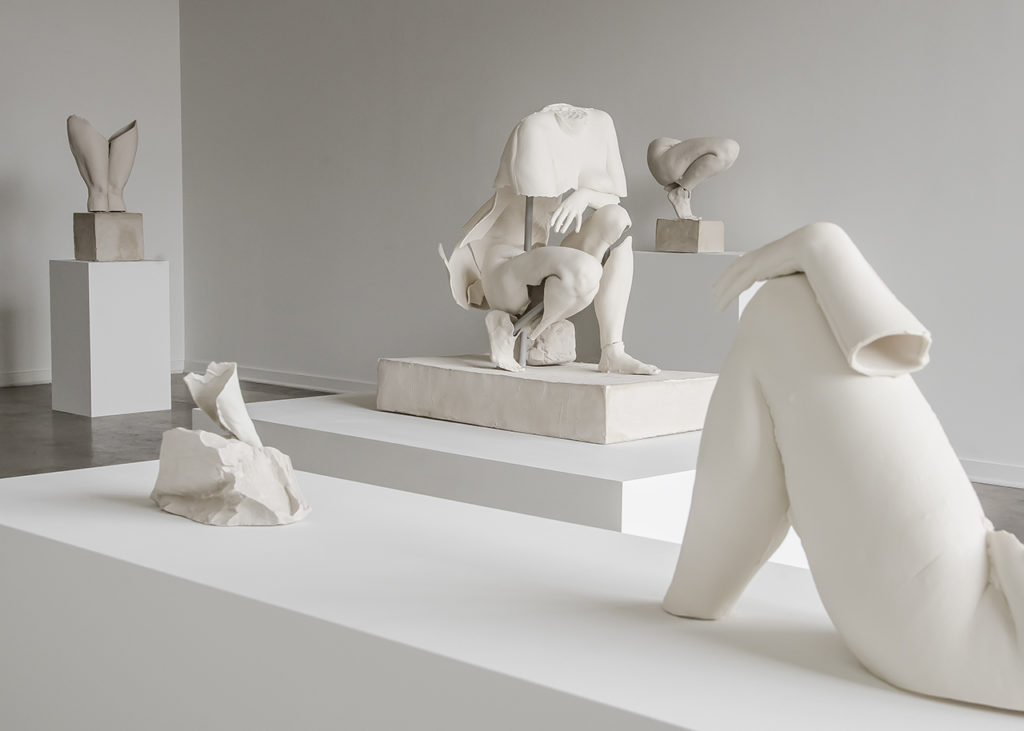
Many artists live by their creative routines, do you have your own studio ritual? What does that look like for you?
I definitely have studio rituals, but I am not a creature of daily routine. My time ebbs and flows. Many of my rituals are pulled from specific experiences from my life. My studio itself is a sort of archive of materials from my life. I often start a studio day at a large table I inherited while at Hunter College turning on a lamp from my first studio in undergrad, burning incense out of a basalt rock I picked up while making binaural audio recordings in Sisters Oregon. Materials conjure memories. When I pour porcelain into a mold, I am not simply replicating a form but engaging my personal lineage. When I watch my hands at work, I am watching them mimic my grandmother’s hands as she worked; my hands are copies and extensions of her hands.
Who are your biggest influences?
I love the work of Joan Jonas, Marisa Merz, Louise Bourgeois, Lorna Simpson, Janine Antoni, Roni Horn.
Are there books or films that are an important source of inspiration?
Reading is a crucial aspect of my practice. The writing of Anne Carson, Maggie Nelson, Audre Lorde, Ursula K. Le Guin, Kathy Acker and Elena Ferrante are really important to me.

How will Innovate Grant contribute to your practice?
I cannot make the molds for this current body of work on my own. The Innovate Grant will assist me in hiring help to create a series of molds for my next sculpture. In a time where things are particularly tight, I am grateful more than ever for this support.
What’s the best piece of advice you’ve been given?
I was fortunate to work with Katy Siegel while at Hunter College. The advice she gave me, and a couple other MFAs about to graduate was excellent. She urged us to invest in our peers and start projects together. To create the opportunities and exhibitions we were seeking, for each other. This has been so helpful. Through co-running a gallery or purely having studio visits and conversations with other artists about their work and I have learned so much about art and my own practice while helping others with theirs.
What is the best advice you would give to other artists?
It’s a hard thing to give good advice. I’m writing this in May of 2020 under quarantine. Giving good advice requires a level of certainty; something of which is in short supply in the current moment.
View Kylie Lockwood's Portfolio
Stay up to date with Kylie Lockwood
Instagram @kylockwood
www.kylielockwood.com